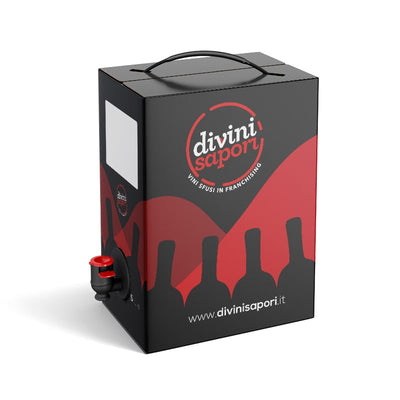Campania is a predominantly hilly region, with a Mediterranean-type climate. The vineyard area exceeds 25 thousand hectares and the main production is of black berried grapes. In fact, 60% of the vineyard area is occupied by black grape varieties , while 40% by white grape varieties . As training systems, the pergola, the espalier and the counter-espalier are widespread.
The history of viticulture in Campania
Campania boasts an ancient winemaking tradition, even prior to the Roman era. It is assumed, in fact, that it was the Greeks who introduced the seeds of vitis vinifera into this region. It is no coincidence that the main native grapes of Campania such as Falanghina , Aglianico , Piedirosso and Fiano , are of Greek origin. During the Roman Empire, Campania's viticulture experienced a flourishing development and Pompeii became the main wine commercial center of the region. From the ports of Pozzuoli and Sinuessa, in fact, the ships departed for the Mediterranean countries and Gaul. With the end of the Roman Empire, the decline of Campania viticulture began, which lasted well beyond the Middle Ages, also due to the arrival of powdery mildew and phylloxera. A recovery was only recorded starting from 1980, but today Campania is considered one of the most interesting regions from an oenological point of view. The greatest concentration of vineyards is in the province of Avellino , where wines such as Fiano di Avellino and Benevento , Greco di Tufo and Taurasi , also called the “ Barolo of the South ” are produced. This wine, obtained from Aglianico, is a very complex and elegant. Furthermore, other important red wines are also produced with Aglianico, such as Taburno DOC and Sannio DOC. The province of Caserta, especially Aversa, is famous for the production of Falanghina . The Vesuvius area, on the other hand, is distinguished by the Lacryma Christi white, red and rosé wines.
The vines of Campania
Campania has numerous vines , especially autochthonous. Among the white grape varieties we can mention Falanghina , Fiano , Greco , etc. Among those with black grapes instead, Aglianico , Piedirosso, Sciascinoso, etc. Sangiovese, Barbera, Malvasia di Candia and Montepulciano instead, are the most cultivated vines among those not native to the region. The area cultivated with international vines does not exceed 2% of the total and is mainly concentrated in the province of Salerno, with Merlot and Cabernet Sauvignon.
The Designations of Origin in Campania
Campania today boasts 15 DOCs (Falanghina del Sannio DOC, Sannio DOC, Falerno del Massico DOC, etc.) and 4 DOCGs (Aglianico del Taburno DOCG, Greco di Tufo DOCG, Fiano di Avellino DOCG, Taurasi DOCG) as well as 10 IGPs .



 Campania, Italia
Campania, Italia